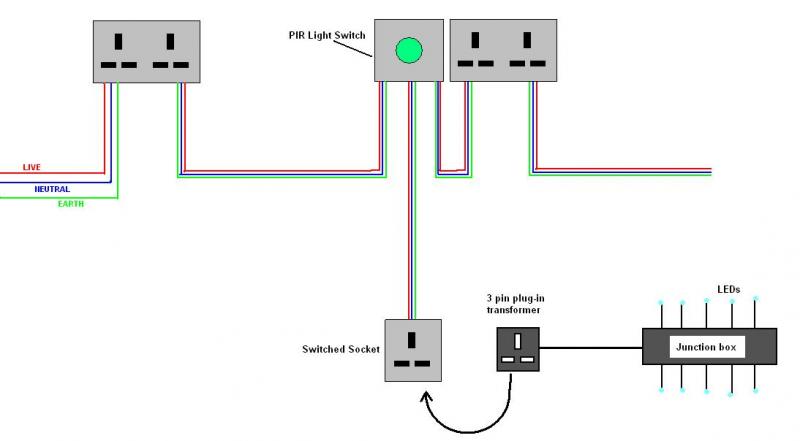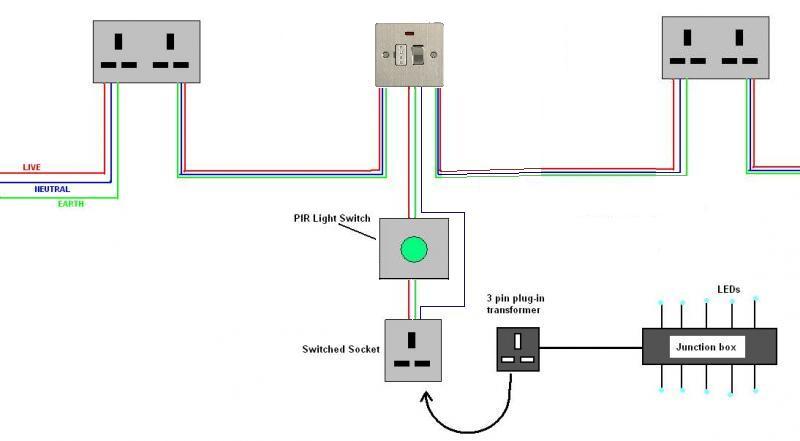I want to get plinth LEDs for my new kitchen and I have seen these which I like:
http://www.sealdesigns.co.uk/45mm-led-lights/10-x-45mm-white-round-led.htm
The problem is that they come with a 3 pin plug in transformer, but I want to control these LEDs from a normal light switch (maybe even a PIR switch) and not a socket switch.
Any ideas on the best way to do this?
I was thinking about plugging the transformer into an extenstion socket and wiring the extension socket to the light switch?

http://www.sealdesigns.co.uk/45mm-led-lights/10-x-45mm-white-round-led.htm
The problem is that they come with a 3 pin plug in transformer, but I want to control these LEDs from a normal light switch (maybe even a PIR switch) and not a socket switch.
Any ideas on the best way to do this?
I was thinking about plugging the transformer into an extenstion socket and wiring the extension socket to the light switch?





